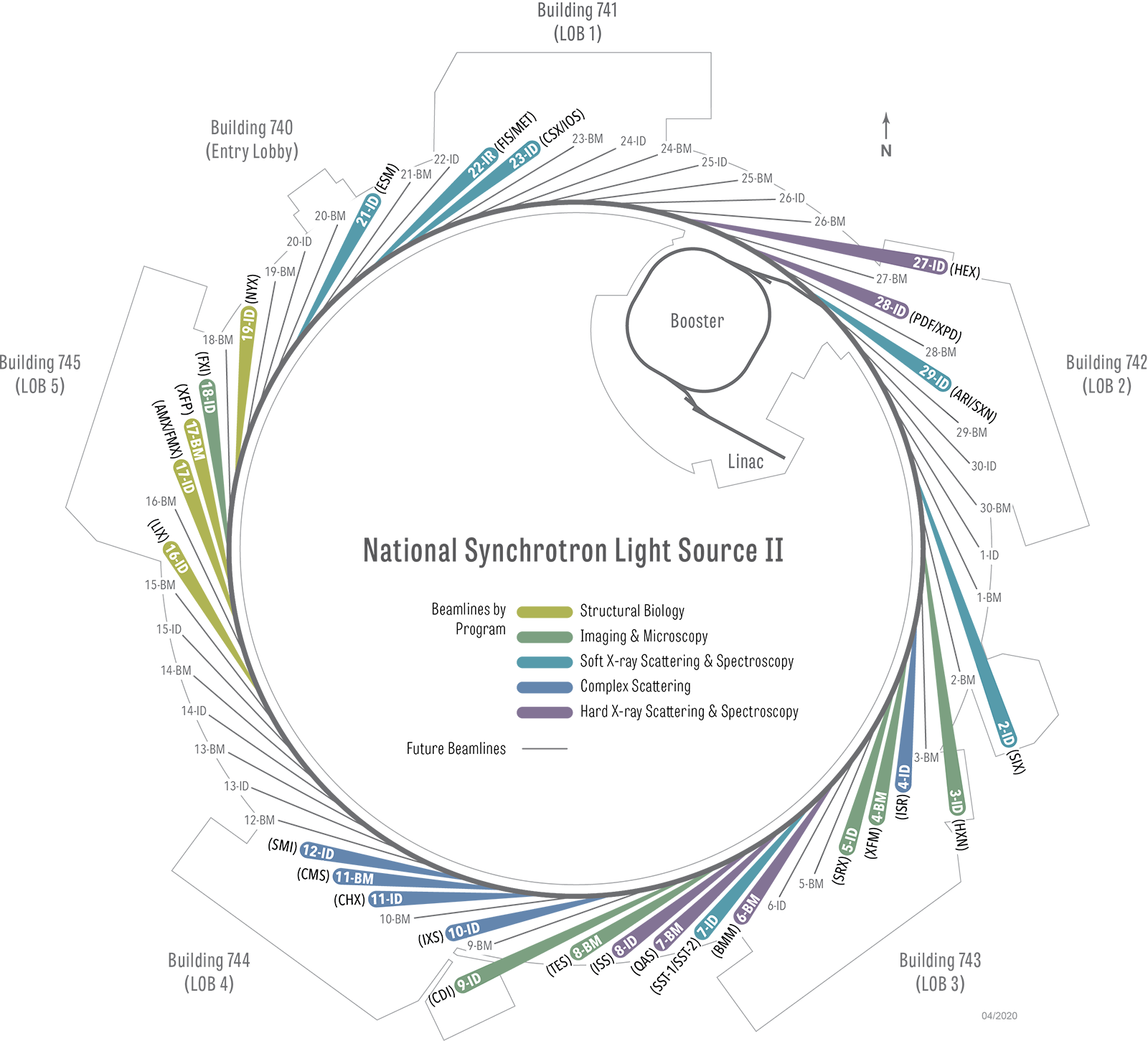
Accelerator
Accelerator Complex
NSLS-II by the Numbers
The National Synchrotron Light Source II (NSLS-II) accelerator complex encompasses everything from the creation of the electrons to the generation of brilliant synchrotron light. The NSLS-II accelerator complex consists of an electron gun, a linear accelerator, a booster ring, and the storage ring. The first three sections are needed to prepare the electrons for their journey through the storage ring, while the medium-energy electron storage ring contains all of the devices that produce the bright light beams.
To create the best experimental conditions for the visiting researchers using NSLS-II's brilliant light, the electron beam can hold a stable position, dimensions, and angle below 10% of its size. Additionally, the intensity has a variability threshold of less than 5%. .
Beamlines
The experimental hall that houses the storage ring offers enough space for up to 60 beamlines, a combination of light transport lines, and experimental stations. These beamlines can be 66 meters (m) to 72 m - or 216 feet to 236 feet - long. NSLS-II can also house nine extra-long beamlines, which can extend beyond the current building, with experimental stations located in an adjacent building. These beamlines can be about 200 m (656 feet) long. More details about NSLS-II beamlines and their capabilities can be found in the beamline directory or on the five Synchrotron Techniques & Methods pages.
Each beamline is equipped with a photon source that generates the bright light beams. Photons are the particles that all light is made of. These sources offer high average spectral brightness with high flux density. Brightness is a measure of how many photons of a certain type or wavelength, are produced, while flux density describes the number of photons produced in short time frame.
Photon Sources
The NSLS-II photon sources span a wide spectral range, from the far infrared (down to 0.1 eV) to the very hard x-ray region (>300 keV). This is achieved by a combination of bending magnets, three-pole wigglers, and insertion device sources, which generate the ultrabright light. Insertion device and bending magnet parameters (PDF).
Storage Ring
The NSLS-II storage ring has a circumference of 792 m (2598 feet). The arrangement of magnets that guide the electrons through the ring and straight sections, that can be used to install the insertion devices, is called a storage ring lattice. The NSLS-II storage ring lattice consists of 30 magnet arrays, or double-bend achromat (DBA) cells, that will accommodate about 60 beamlines. These beamlines can be distributed by type in the following way:
- 15 low-beta insertion device straights for undulators or superconducting wigglers
- 12 high-beta insertion device straights for either undulators or damping wigglers
- 31 bending magnet ports providing broadband sources covering photon energies from infrared to soft x-rays. Any of these ports can, alternatively, be replaced by a three-pole wiggler port covering the hard x-ray range
- 4 bending magnet ports on large gap (90 mm) dipoles for very far infrared light
- Multiple insertion devices can be installed in a single straight section for additional beamline capacity.





